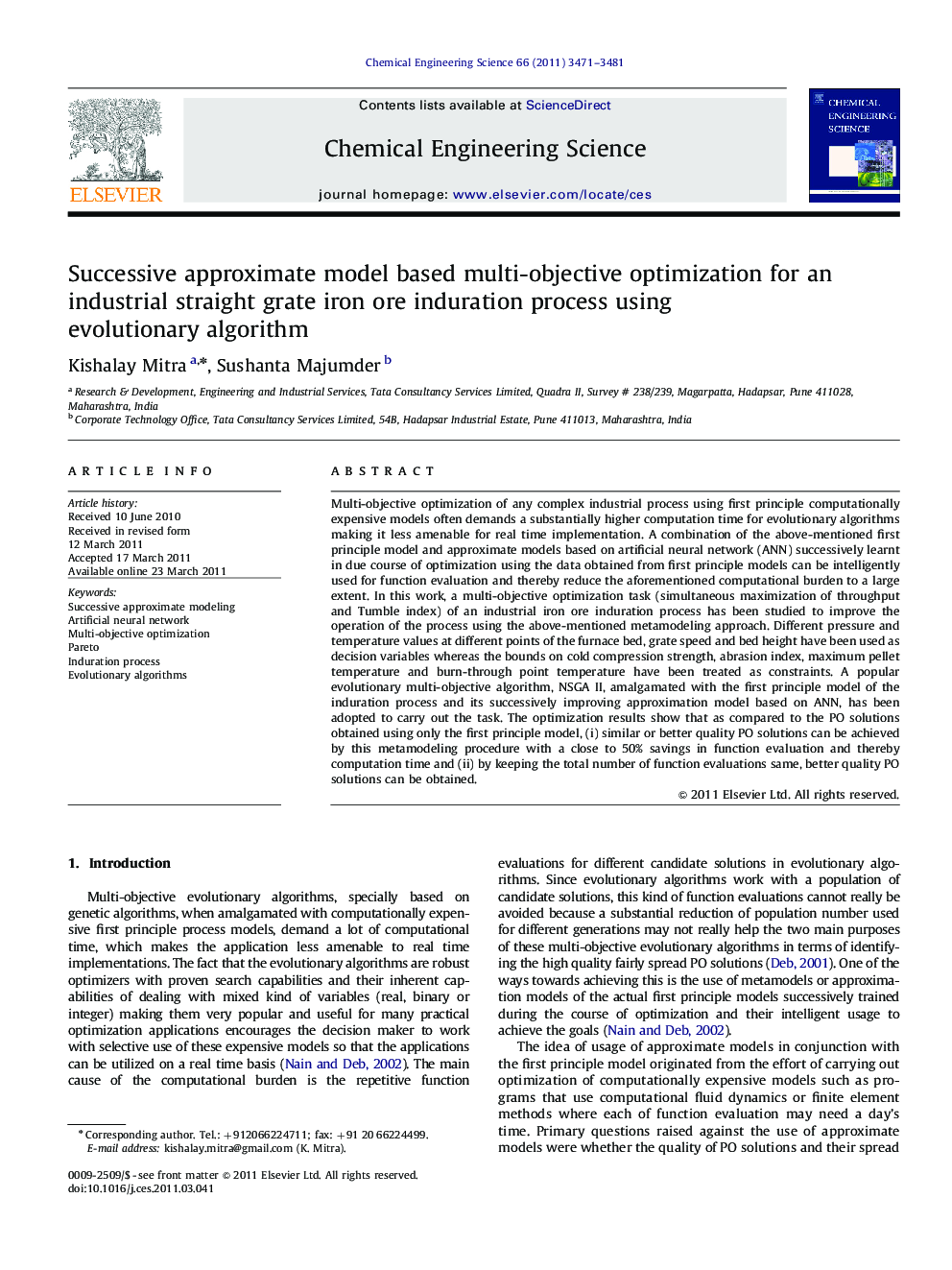| Article ID | Journal | Published Year | Pages | File Type |
|---|---|---|---|---|
| 156572 | Chemical Engineering Science | 2011 | 11 Pages |
Multi-objective optimization of any complex industrial process using first principle computationally expensive models often demands a substantially higher computation time for evolutionary algorithms making it less amenable for real time implementation. A combination of the above-mentioned first principle model and approximate models based on artificial neural network (ANN) successively learnt in due course of optimization using the data obtained from first principle models can be intelligently used for function evaluation and thereby reduce the aforementioned computational burden to a large extent. In this work, a multi-objective optimization task (simultaneous maximization of throughput and Tumble index) of an industrial iron ore induration process has been studied to improve the operation of the process using the above-mentioned metamodeling approach. Different pressure and temperature values at different points of the furnace bed, grate speed and bed height have been used as decision variables whereas the bounds on cold compression strength, abrasion index, maximum pellet temperature and burn-through point temperature have been treated as constraints. A popular evolutionary multi-objective algorithm, NSGA II, amalgamated with the first principle model of the induration process and its successively improving approximation model based on ANN, has been adopted to carry out the task. The optimization results show that as compared to the PO solutions obtained using only the first principle model, (i) similar or better quality PO solutions can be achieved by this metamodeling procedure with a close to 50% savings in function evaluation and thereby computation time and (ii) by keeping the total number of function evaluations same, better quality PO solutions can be obtained.
